VisualGDB Ultimate 5.5 Preview 3
Cross-platform development with Visual Studio easy and comfortable. It supports:
Barebone embedded systems and IoT modules (see full list)
As of VisualGDB 5.3 Preview 8, the chronometer only works on ARM Cortex devices that support the debug instruction counter (a hardware mechanism for counting CPU cycles), however we designed this feature to be completely extendable, so you can configure it to use other sources of timing information (such as hardware timers) instead. VisualGDB license comes with one year of free updates and technical support that can be renewed afterwards. To get the best out of VisualGDB for your platform, try browsing through more than 100 tutorials covering scenarios from FreeBSD to WiFi SoCs or hundreds of topics on our forum. OpenOCD is not included in the toolchain and is available as a separate download. Recommended Tools. For optimal development experience, try VisualGDB - our Visual Studio extension for advanced cross-platform development that supports automatic tool and driver configuration, intuitive register viewer, live variables, profiler, stack and memory layout analyzer and much more.
Description Free Download. VisualGDB seamlessly integrates with Visual Studio, allowing the development of Linux applications in C/C and Android or Embedded projects. VisualGDB Ultimate 5.3.18 Build 1973. Sketchup pro 2018 license and authorization code. Cross-platform development with Visual Studio easy and comfortable. It supports: Barebone embedded systems and IoT modules (see full list) C/C Linux Applications Native Android Apps and Libraries Raspberry Pi and other Linux boards Linux kernel modules (separate VisualKernel product).
C/C++ Linux ApplicationsNative Android Apps and Libraries
Raspberry Pi and other Linux boards
Linux kernel modules (separate VisualKernel product)
Target your own devices and platforms with Extensibility API
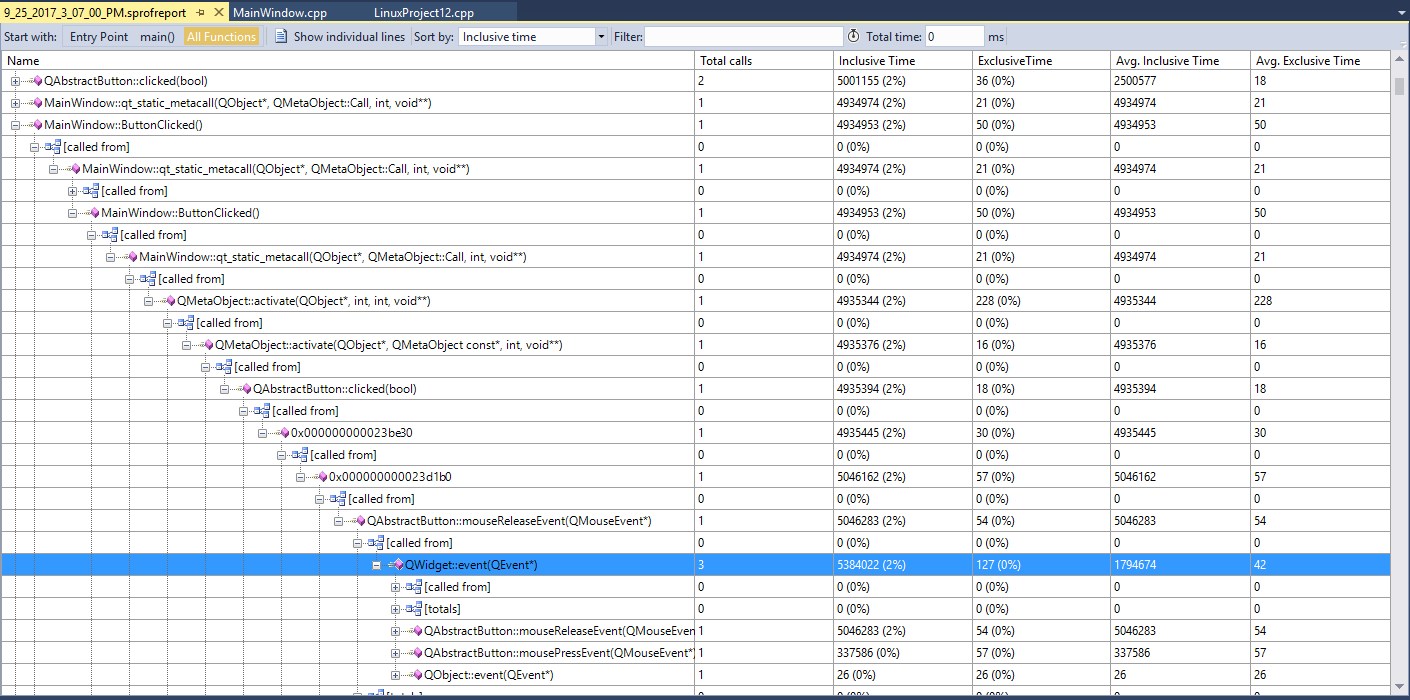
Focus on your product, not the tools
VisualGDB will automatically install and configure the necessary tools:
Embedded toolchains
Cross-compilers for common Linux boards
Compilers/debuggers on Debian- and RedHat-based Linux
GDB Stub software like OpenOCD
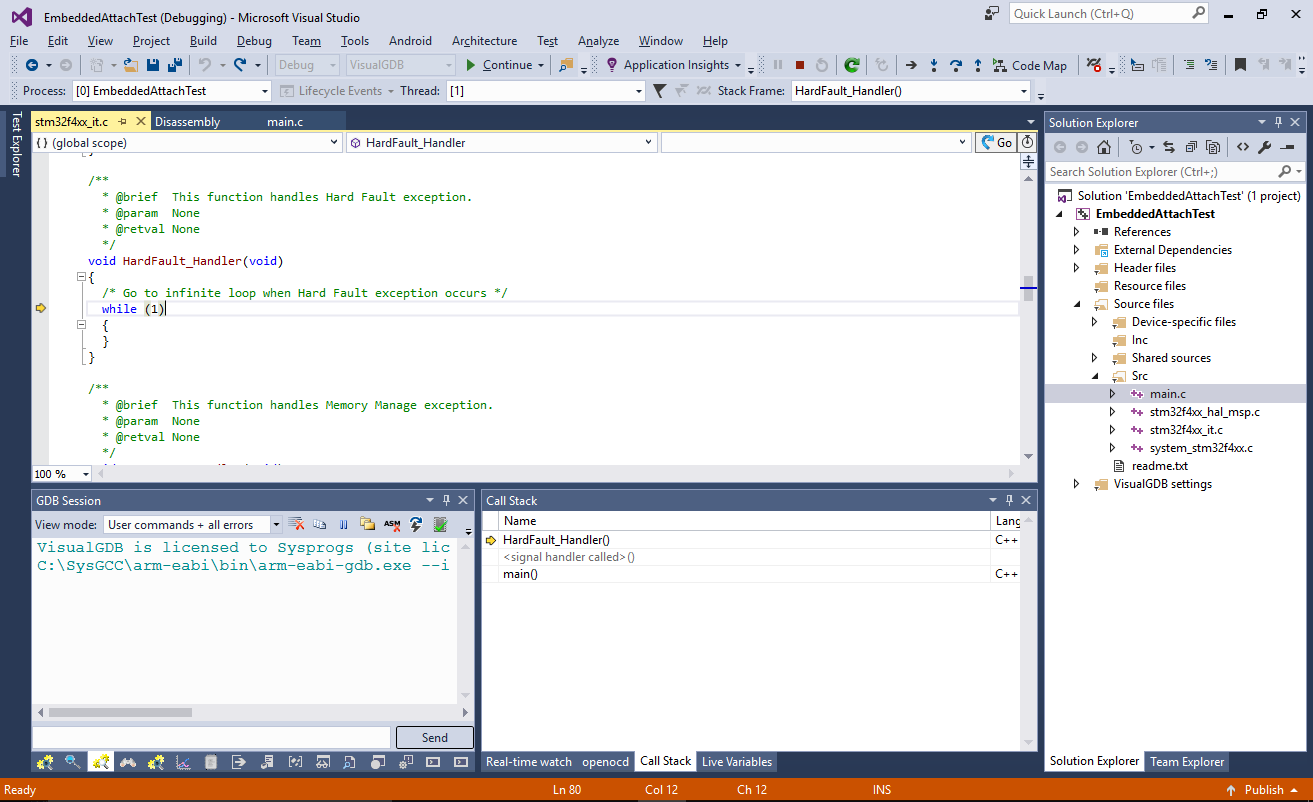
Advanced CMake Integration
Visualgdb 5.4 Final
VisualGDB supports advanced CMake project subsystem, with 2-way synchronization between the CMakeLists files and Solution Explorer enabling you to:
Easily view, add, remove and edit CMake targets
Edit target settings via regular VS Property Pages
Easily add/remove/rename sources for individual targets
Configure advanced deployment options for targets
Have precise IntelliSense configuration for complex projects
For advanced CMake projects, VisualGDB can access source files on remote Linux machines directly via SSH, without needing to store 2 copies of each file and synchronize them.
Seamless Support for Unit Tests
VisualGDB integrates popular CppUTest and GoogleTest frameworks in Visual Studio and provides an easy API to integrate custom frameworks. With one click of a mouse you can run/debug tests on:
Embedded ARM devices via JTAG/SWD
Linux machines and boards like Raspberry Pi
Android devices
Powerful Linux profiling
VisualGDB takes profiling an dynamic analysis of Linux programs to a new level. Featuring the extremely scalable profiling database format VisualGDB lets you conveniently explore the performance of your program and relations between different parts ot it. Switch between function tree, global function list and detailed per-line view to quickly find and compare the information you need.
Fast and flexible project building
VisualGDB includes an high-performance MSBuild back-end optimized for lightning fast builds of Embedded and Linux projects and automatic and precise IntelliSense.
If your project already uses GNU Make, CMake or QMake, you can easily import it into VisualGDB and have your IntelliSense and settings managed automatically.
Powerful debugging experience
VisualGDB provides consistent Visual Studio debugging experience for local, SSH-based, JTAG-based debugging and many more. You hit F5, VisualGDB does the rest. Advanced debug features include:
IntelliSense and preprocessor support in Watch windows
Built-in SSH terminal and file transfer for Linux debugging
Powerful custom actions to automate routine tasks
Enter your own GDB commands and record command timings
Easy interface for complex tools
VisualGDB provides graphical interface for editing common settings of most widely used build tools from GNU/Linux:
Graphically edit Makefiles and synchronize source file lists
Manage CMake targets and settings
Create and maintain QMake files for Qt projects
Precise IntelliSense for large imported CMake projects
Use VisualGDB-generated Makefiles or import your own
Integration with Team Foundation Server
VisualGDB features an open-source TFS plugin for easy out-of-the-box building of VisualGDB projects. Simply install the plugin to your TFS build server and build Make, CMake, or QMake-based VisualGDB projects easily and automatically with no need to install a separate instance of Visual Studio.
Easily share settings with your team
VisualGDB includes a convenient mechanism for sharing numerous types of settings and presets with your entire team. Simply configure a shared settings directory and then instantly share remote hosts, aliases, toolchain definitions, embedded packages, quick debug settings and common preferences to all computers using the same shared settings directory.
Configure team settings on your TFS build server and never experience the need to manually keep the global settings up-to-date.
Advanced IntelliSense with refactoring
VisualGDB includes a powerful Clang-based IntelliSense engine that fully supports GCC-specific code and is integrated with Make, QMake and CMake. Advanced features include:
Create implementations for newly added methods
Create-from-use for methods and constructors
Automatic implementation of interfaces
Visualgdb 5.4 Patch
Edit-driven renaming with C++11 support
Automatic corrections of common errors and typos
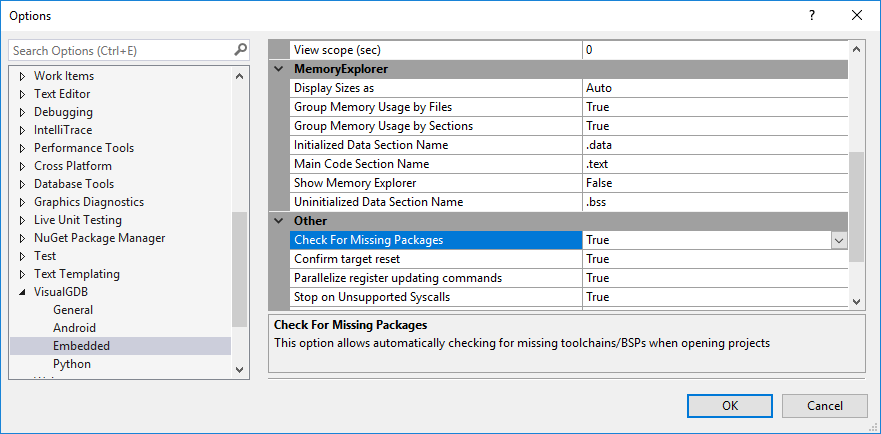
Code Map for functions, methods, variables and more in C++ code
First-class support and extensive tutorials
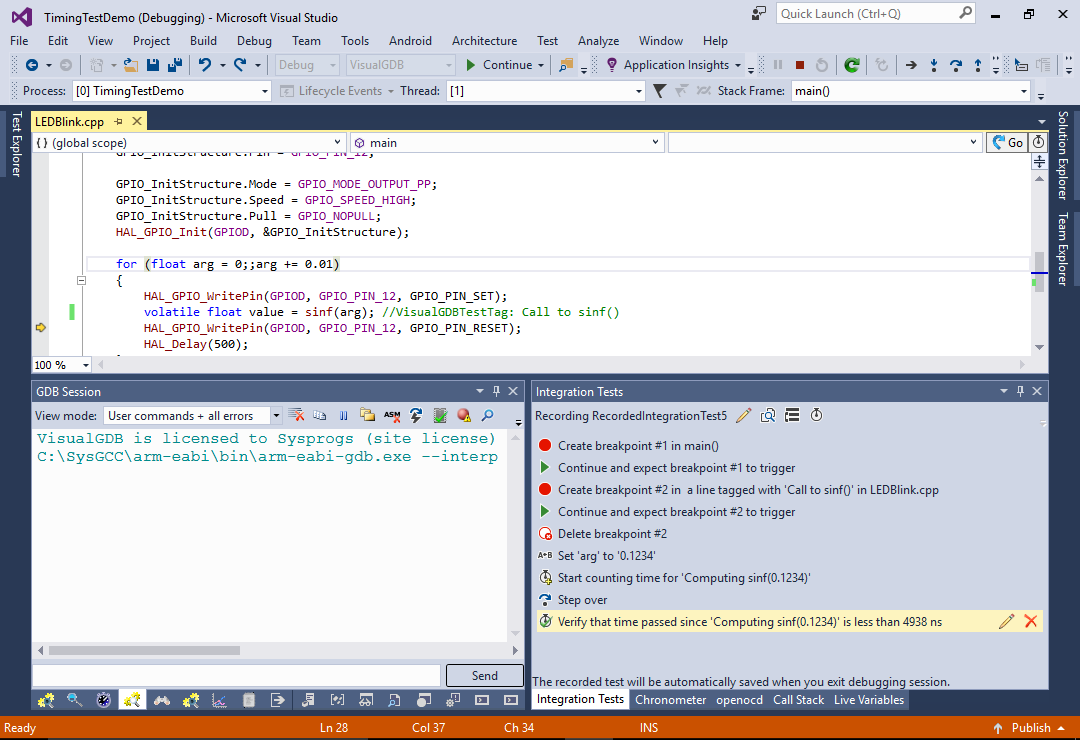
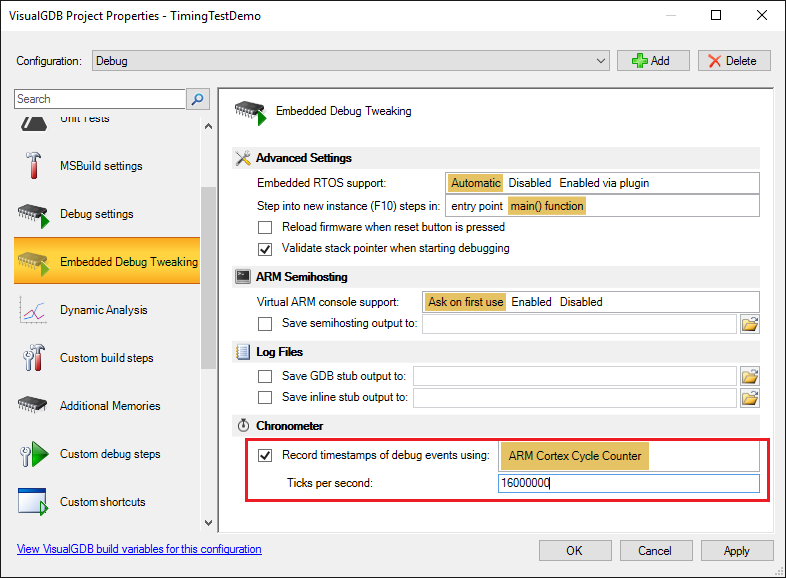
Focus on your product, not the tools
VisualGDB will automatically install and configure the necessary tools:
Embedded toolchains
Cross-compilers for common Linux boards
Compilers/debuggers on Debian- and RedHat-based Linux
GDB Stub software like OpenOCD
All you need to do is choose your device from the list and start developing! VisualGDB can also easily import your existing code or debug code that is built elsewhere.
Advanced CMake Integration
Visualgdb 5.4 Final
VisualGDB supports advanced CMake project subsystem, with 2-way synchronization between the CMakeLists files and Solution Explorer enabling you to:
Easily view, add, remove and edit CMake targets
Edit target settings via regular VS Property Pages
Easily add/remove/rename sources for individual targets
Configure advanced deployment options for targets
Have precise IntelliSense configuration for complex projects
For advanced CMake projects, VisualGDB can access source files on remote Linux machines directly via SSH, without needing to store 2 copies of each file and synchronize them.
Seamless Support for Unit Tests
VisualGDB integrates popular CppUTest and GoogleTest frameworks in Visual Studio and provides an easy API to integrate custom frameworks. With one click of a mouse you can run/debug tests on:
Embedded ARM devices via JTAG/SWD
Linux machines and boards like Raspberry Pi
Android devices
Powerful Linux profiling
VisualGDB takes profiling an dynamic analysis of Linux programs to a new level. Featuring the extremely scalable profiling database format VisualGDB lets you conveniently explore the performance of your program and relations between different parts ot it. Switch between function tree, global function list and detailed per-line view to quickly find and compare the information you need.
Fast and flexible project building
VisualGDB includes an high-performance MSBuild back-end optimized for lightning fast builds of Embedded and Linux projects and automatic and precise IntelliSense.
If your project already uses GNU Make, CMake or QMake, you can easily import it into VisualGDB and have your IntelliSense and settings managed automatically.
Powerful debugging experience
VisualGDB provides consistent Visual Studio debugging experience for local, SSH-based, JTAG-based debugging and many more. You hit F5, VisualGDB does the rest. Advanced debug features include:
IntelliSense and preprocessor support in Watch windows
Built-in SSH terminal and file transfer for Linux debugging
Powerful custom actions to automate routine tasks
Enter your own GDB commands and record command timings
Easy interface for complex tools
VisualGDB provides graphical interface for editing common settings of most widely used build tools from GNU/Linux:
Graphically edit Makefiles and synchronize source file lists
Manage CMake targets and settings
Create and maintain QMake files for Qt projects
Precise IntelliSense for large imported CMake projects
Use VisualGDB-generated Makefiles or import your own
Integration with Team Foundation Server
VisualGDB features an open-source TFS plugin for easy out-of-the-box building of VisualGDB projects. Simply install the plugin to your TFS build server and build Make, CMake, or QMake-based VisualGDB projects easily and automatically with no need to install a separate instance of Visual Studio.
Easily share settings with your team
VisualGDB includes a convenient mechanism for sharing numerous types of settings and presets with your entire team. Simply configure a shared settings directory and then instantly share remote hosts, aliases, toolchain definitions, embedded packages, quick debug settings and common preferences to all computers using the same shared settings directory.
Configure team settings on your TFS build server and never experience the need to manually keep the global settings up-to-date.
Advanced IntelliSense with refactoring
VisualGDB includes a powerful Clang-based IntelliSense engine that fully supports GCC-specific code and is integrated with Make, QMake and CMake. Advanced features include:
Create implementations for newly added methods
Create-from-use for methods and constructors
Automatic implementation of interfaces
Visualgdb 5.4 Patch
Edit-driven renaming with C++11 support
Automatic corrections of common errors and typos
Preprocessor lens to understand complex preprocessor macros
Code Map for functions, methods, variables and more in C++ code
First-class support and extensive tutorials
VisualGDB license comes with one year of free updates and technical support that can be renewed afterwards. To get the best out of VisualGDB for your platform, try browsing through more than 100 tutorials covering scenarios from FreeBSD to WiFi SoCs or hundreds of topics on our forum. We also provide a support system and email support for both registered and trial users.
Only for V.I.P
- 1.Using J-Link Built-In Flash Loaders
- 2.Using VisualGDB
- 3.Configuring VisualGDB to Work with J-Link and the Target Device
Visual GDB is a full featured extension for Microsoft Visual Studio, which allows debugging embedded systems via Microsoft Visual Studio + J-Link + GDB. VisualGDB is compatible with MSVS 2005-2013 running on Windows XP-7 x86 / x64. Mf9200 driver. (MSVS Express Editions are not supported).
We recommend to use VisualGDB V4.1 or later.
After downloading & installing VisualGDB, it should be shown as an extension in Visual Studio.
This can be verified by starting Visual Studio and selecting Tools | Extensionmanager.
VisualGDB uses GDB for embedded debugging and so makes automatically use of the J-Link GDBServer. This allows using J-Link out-of-the-box and automatically uses the J-Link built-in flash loaders which are highly optimized for flash programming. It also allows making use of the J-Link 'unlimited number of breakpoints when debugging in flash' feature.
Using VisualGDB
Prior to using VisualGDB, the J-Link Software and Documentation package needs to be installed. It is recommended to always use the latest version of the software. During the installation of VisualGDB, it will ask for the installation path of the J-Link software package. To open a project follow the instructions below:
- Select File| Open | Project/Solution..
- Select a project file (here: EmbeddedProject1.sln)
- Click Open
- Now the Visual Studio + VisualGDB window should look like as follows:
The target connection can be set as follows:
- Select Project | VisualGDB Project Properties
- Click Change settings
- Choose the target settings for your device and click OK
SysProgs also offers free guides to generate a sample project for specific devices. e.g.: http://visualgdb.com/tutorials/arm/stm32/
